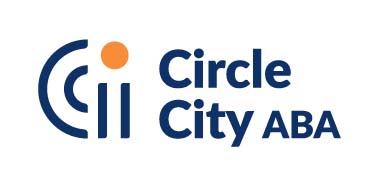
Applied Behavior Analysis (ABA) is a powerful tool for helping children with autism develop essential skills. When talking about ABA therapy, you might hear about the “seven dimensions of ABA.” These seven dimensions help guide how ABA therapy is structured, making it more effective and personalized for each child.
At Circle City ABA, our approach is based on these dimensions, ensuring that every therapy session is meaningful and impactful for your child. Let’s explore what each dimension means and how it helps children grow and succeed.
What Are the 7 Dimensions of ABA?
The seven dimensions of ABA are a set of guidelines that therapists follow to make ABA therapy successful. Each dimension ensures that therapy is tailored to the individual, scientific, and focused on real-life improvements. Here’s a closer look at each of these dimensions.
- Applied: Focusing on Real-Life Needs
In ABA, the term “applied” means that therapy is aimed at helping children develop skills they can use in everyday life. This could be anything from learning to communicate better to improving social skills to developing independence in tasks like getting dressed.
For example, if a child struggles with brushing their teeth, an ABA therapist will work on teaching this skill step-by-step, making sure it’s something the child can use every day. - Behavioral: Targeting Specific Actions
The “behavioral” dimension focuses on observable actions. Instead of guessing what a child might be feeling or thinking, ABA therapists focus on what a child does. By observing behaviors like hand-flapping or avoiding eye contact, therapists can create a plan to help the child develop more helpful behaviors.
For instance, if a child has difficulty waiting for their turn in a game, the therapist will focus on teaching the skill of waiting rather than assuming why the child finds it challenging. - Analytic: Using Data to Make Decisions
ABA therapy is based on evidence and data. This means that therapists collect data on how the child responds to therapy and make changes based on this information. The “analytic” dimension ensures that therapy is personalized and adjusted to meet the child’s needs.
If a strategy isn’t working, the therapist will try something new based on the data they’ve gathered. This ensures that the therapy is always moving forward and helping the child. - Technological: Clear and Detailed Instructions
In the technological dimension, therapists break down tasks into simple, easy-to-understand steps. This helps ensure that anyone working with the child, whether it’s another therapist or a family member, knows precisely how to teach the skill.
For example, when teaching a child how to tie their shoes, the therapist will write down each step so everyone involved knows how to follow the same process. - Conceptually Systematic: Using Proven Techniques
ABA therapy is based on established principles of behavior, such as reinforcement and modeling. The “conceptually systematic” dimension backs all therapy techniques with scientific research, proving they help children learn and grow. Therapists at Circle City ABA follow these proven methods to deliver therapy that consistently works. - Effective: Making a Positive Impact
ABA therapy must be effective, meaning it should produce meaningful changes in the child’s life. The “effective” dimension ensures that therapy is actually helping the child reach their goals, whether it’s learning to talk, play with friends, or follow daily routines.
Therapists constantly measure progress and make adjustments to ensure the child is always moving forward. - Generality: Skills That Last Over Time
The final dimension, generality, ensures that children use the skills they learn during therapy over time and in various settings. For instance, if a child learns to share toys during a therapy session, they should be able to share them with their siblings at home or friends at school.
At Circle City ABA, therapists work hard to ensure that children learn new skills and use them in real-life situations long after therapy ends.
How the 7 Dimensions of ABA Shape Therapy at Circle City ABA
At Circle City ABA, we follow the seven dimensions of ABA to create personalized therapy plans for each child. These dimensions guide everything we do, ensuring that therapy is not only effective but also meaningful for your family.
Our goal is to help your child develop lasting essential life skills. From the first day of therapy, we work with you and your child to focus on real-world improvements that make a difference in your child’s daily life.
Start ABA Therapy with Circle City ABA Today
If you’re ready to explore how ABA therapy can help your child thrive, Circle City ABA is here to support you. Our experienced therapists follow the seven dimensions of ABA to create personalized therapy plans that help children with autism build the skills they need to succeed.
Contact Circle City ABA today to learn more about our services and how we can help your child grow.
References:
- Baer, D. M., Wolf, M. M., & Risley, T. R. (1968). Some Current Dimensions of Applied Behavior Analysis. *Journal of Applied Behavior Analysis*, 1(1), 91-97.
- Cooper, J. O., Heron, T. E., & Heward, W. L. (2020). *Applied Behavior Analysis* (3rd ed.). Pearson.


